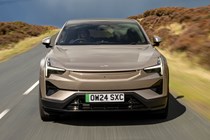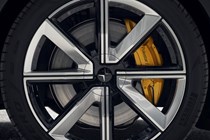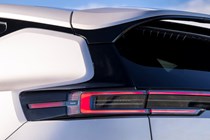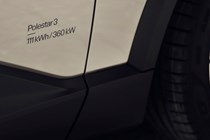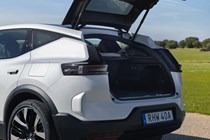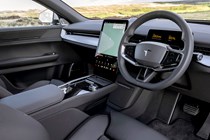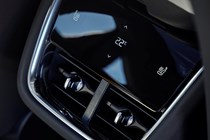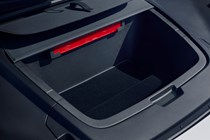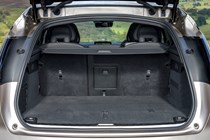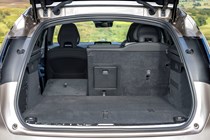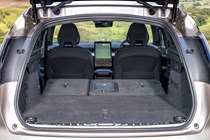Polestar 3 review
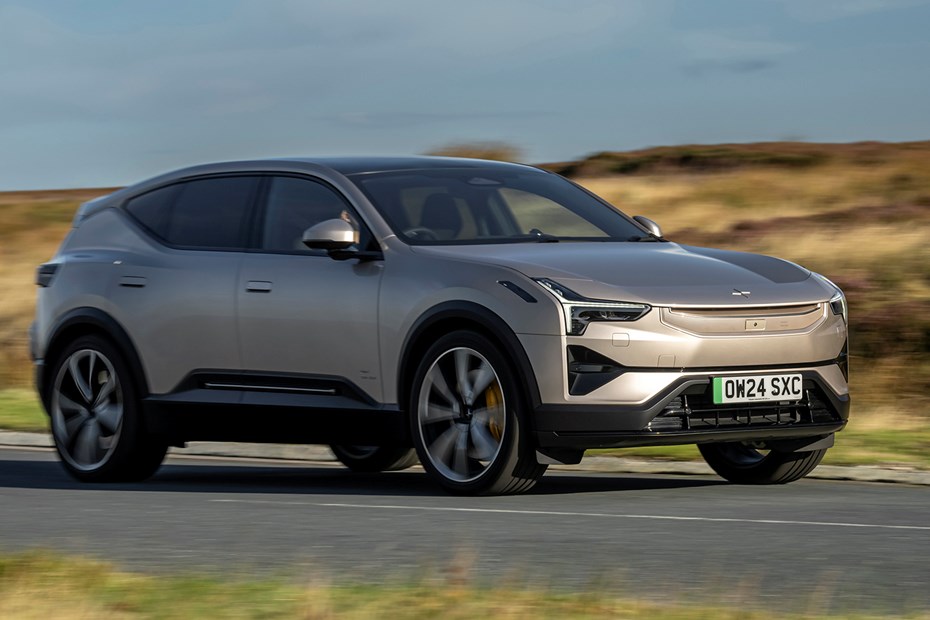
At a glance
| Price new | £69,910 - £88,810 |
|---|---|
| Used prices | £42,740 - £62,040 |
| Road tax cost | £620 |
| Insurance group | 50 |
Get an insurance quote with

|
|
| Fuel economy | 2.7 - 3.5 miles/kWh |
| Range | 329 - 438 miles |
| Miles per pound | 4.3 - 10.3 |
| Number of doors | 5 |
| View full specs for a specific version | |
Available fuel types
Fully electric
Pros & cons
- Good range
- Handles well
- Luxurious interior
- Firm ride with Performance Pack
- Relatively small boot
- Too much reliance on touchscreen
Polestar 3 SUV rivals
Overview
Although Polestar is a relatively new entrant to the electric car market, it’s likely you’re aware of the firm’s output. The Tesla Model 3-rivalling Polestar 2 is already a common sight on our motorways, with more new products arriving all the time. There are many EV start-ups joining the fray right now, but what sets the firm apart is that it branched out of Volvo, and there’s a lot of Scandinavian design integrity here to surprise and delight owners.
Polestar hopes that the 3 will repeat the successes of its smaller counterpart. It’s the brand’s largest offering that competes with the glut of rival luxury electric SUVs on sale. There’s also a smaller 4 SUV on the way, but Polestar gives the highest number to their newest car, not the largest. Confused? Don’t be.
This one is currently available with two power outputs. There’s the Long Range Dual Motor that gets 489hp and does 0-62mph in 5.0 seconds, or the Performance Pack with 517hp for 0-62mph in 4.7 seconds. It shares a platform with the Volvo EX90 although unlike that car, the Polestar 3 only comes with five seats.
Key rivals mainly come from Germany, with the Audi Q8 E-Tron, BMW iX and Mercedes EQE SUV all in its sights. If you like the sound of the 3 Performance Pack, there are hot versions of the three aforementioned competitors, as well as the Lotus Eletre and the Maserati Grecale Folgore to consider. We’ve driven the Long Range Dual Motor and the Performance Pack versions both overseas and in the UK, and to learn a bit more about how we test cars, take a look at our explainer page.
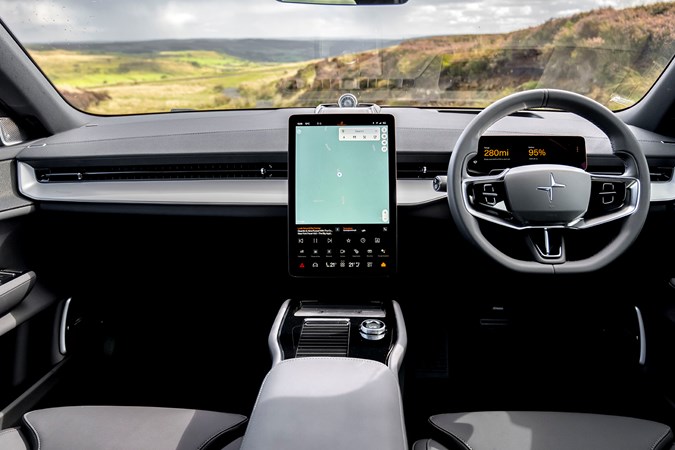
What’s it like inside?
Like the Polestar 2, the 3 gets a minimalist interior, albeit with even more impressive quality. Our test car’s supple leather, wood trim and squishy plastics make for a luxurious interior that beats the Mercedes EQE SUV for quality and runs the Lotus Eletre close. A Lotus beating a Mercedes for quality? Welcome to the strange new world of upmarket electric SUVs.
Minimalism means there are few physical controls inside the 3. You get a very nice volume control knob that pauses music with a push, but all other stereo controls, plus the heating and even the mirror and steering wheel adjustment is buried in the large 14.5-inch central infotainment touchscreen. Shortcut icons and temperature controls at the bottom of the screen help, and at least the display is sharp, the graphics appealing and you’re not endlessly scrolling through multiple menus.
Space for passengers up front is generous, and there’s plenty of width to the interior, too. Rear legroom is excellent, with headroom good but not at the same level as the BMW iX. Four tall adults will be very happy sat in the 3, five still comfortable.
The disadvantage of giving rear passengers so much space is that the boot isn’t as big as rivals’. There’s a hatchback-like 394-litres of capacity, with another 90-litres of underfloor storage space. At least you can sling your cables in the 32-litre compartment under the bonnet. The boot is also well thought out, with 40/20/40 split folding rear seats and, if you go for the Plus Pack, a load separator built into the boot floor.
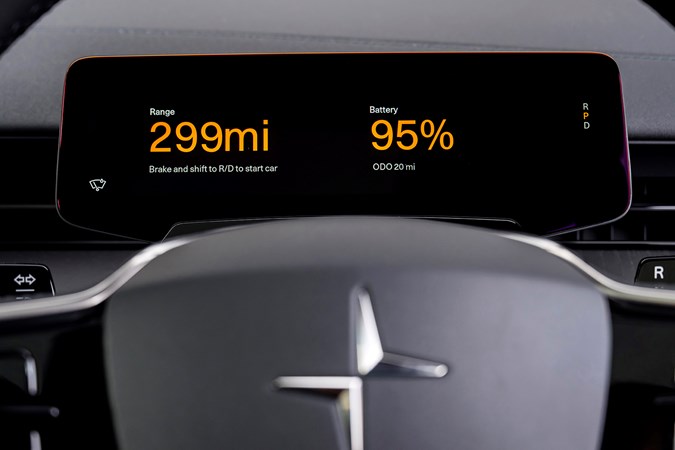
Comfort
A choice of fabric, faux leather, wool or Nappa leather seats is available, all of which are ethically sourced. We’ve so far only tried the Nappa leather that comes with ventilation and a decent massage function, and found them to be comfortable if not the most supportive seats for hard cornering.
There’s a huge array of adjustments for the seats, so it’s disappointing the steering wheel doesn’t come far enough out.
The rear bench is well shaped and very comfortable, with even the centre passenger getting a bum indent. The rear floor is completely flat, and there’s enough room for three pairs of feet. Motor and road noise is well supressed, although there’s a surprising amount of wind noise.
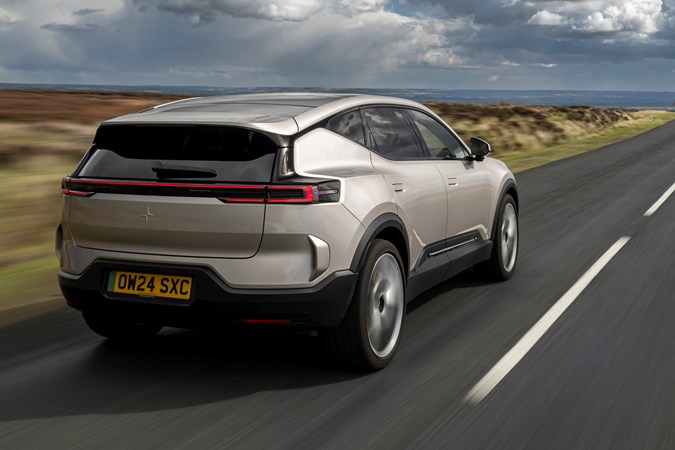
Safety
Euro NCAP has yet to test the Polestar 3, but being related to a Volvo should almost guarantee it a five-star safety rating. It’s packed full of the latest safety kit including adaptive cruise control with automatic emergency braking, lane keep assist, road sign information, blind spot monitoring, a cross-traffic alert and a rear collision alert. Lidar will be available later in the Polestar 3’s life, bringing improved driver assistance.
What’s it like to drive?
The answer to this question greatly depends on whether you’ve opted for the Performance Pack. The regular dual motor accelerates quickly, if not as violently as some other EVs out there, and the Performance Pack feels moderately stronger. In the real world, it’s more than enough for any situation. We particularly like how the power is moderated, so if you put your foot down hard to overtake, it doesn’t just lunge forward, but acceleration builds up as the speed rises.
The most noticeable difference between the two versions is in the ride. The regular 3 rides softly, with good compliance and a touch of waft that makes for comfortable progress. It’s not quite as good as rounding off lumps as it could be, but it does at least handle typical B-road surface imperfections confidently, and potholes don’t throw it off course. The Performance Pack gives a much firmer, tightly controlled feel making you more aware of the road’s surface. We’d stick to the regular dual motor, and probably avoid the optional 21-inch wheels of our test car.
Polestar has worked hard to make the 3 appeal to the keen driver. Adjustable air suspension is standard, allowing you to firm things up, and you also get a clever differential that can vary how much power each rear tyre gets, and which side has more regenerative braking. This helps tuck the nose into bends during braking and accelerating, boosting the agility of this 2.7 tonne SUV.
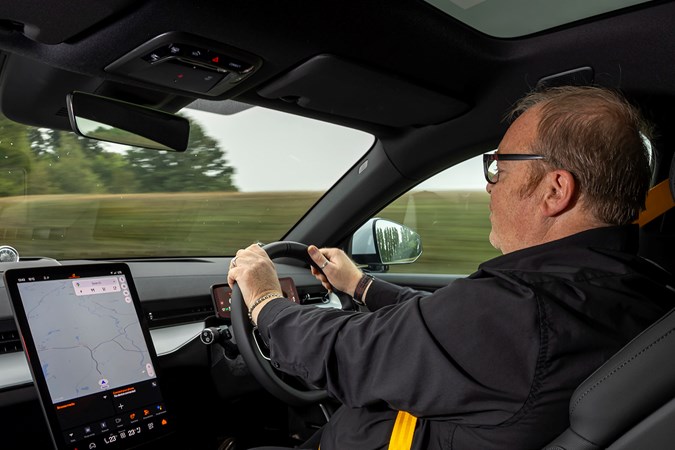
It works well, and Sport mode suspension reduces lean and helps it feel impressively keen. It can’t quite match the physics-bending cornering forces of something like a BMW iX M60, although that’s a lot pricier and packed with even more chassis tech. Brake feel could be more natural, with a clear distinction between regenerative and friction braking, but it’s by no means the worst in class and you soon dial in to it.
We’d prefer a bit less weight and self-centring on the steering, although precision is good and you don’t feel totally disconnected from the road. But for motorways, it’s an ideal set-up, which in conjunction with the excellent lane-keeping technology means long-distance runs are stress free.
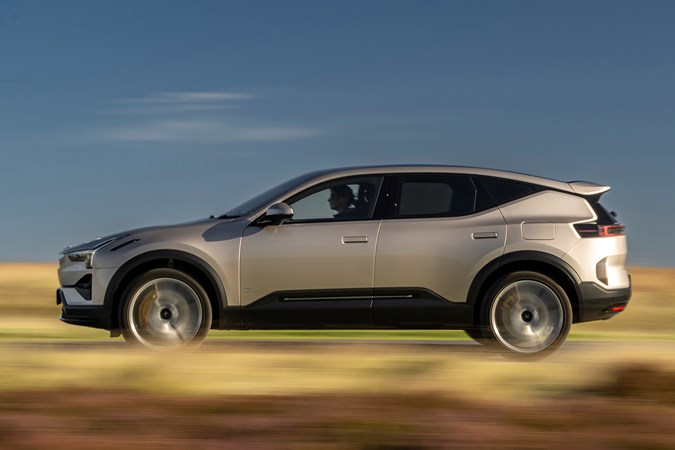
Range and charging
All Polestar 3s get a 107kWh battery that’ll charge from 10-80% in 30 minutes on a 250kW rapid charger. A full charge from empty takes 11 hours, but that’s on an 11kW three-phase charger. Expect to add a few hours to that if you’ve got a typical UK domestic 7.4kW wallbox.
A regular dual motor 3 manages 390 miles of driving range under WLTP regulations, with the Performance Pack dropping this to 349. Those figures are towards the top of the class, and should mean 300 miles will be achievable in the real world at motorways speeds. We’ll verify that when we drive the 3 for a longer period in the UK.
What models and trims are available?
For the moment, there’s just the Dual Motor with a range of packs and options. We’ve already talked about the Performance Pack, but there’s also the Pilot and Plus Pack. The Pilot Pack adds semi-autonomous driving, with steering assist, lane change assist and parking assistance. Plus Pack adds an excellent 25-speaker Bowers & Wilikins stereo, soft-close doors, heated rear seats, a heated steering wheel, nicer seat fabric, the clever rear boot floor, 21-inch wheels and more.
Additional options include matrix LED headlights, 22-inch wheels and even a tow bar. It’ll tow a 2,200kg braked trailer if you’re interested.
Does this new take on the luxury SUV have what it takes to beat some very impressive rivals? Should you buy Polestar 3, or just go for the default choice Audi, BMW or Mercedes-Benz instead? Read on for our verdict to find out.




